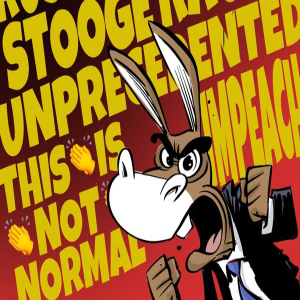Disaster aid bill seen more likely than omnibus spending package post-election
Published in Political News
WASHINGTON — With all eyes on next week’s elections, appropriations battles are simmering on the back burner for Congress. But lawmakers won’t have long to make some tough decisions when they return starting on Nov. 12 for the lame-duck session.
The priorities are twofold: first, passing an emergency relief package after two major hurricanes battered the Southeast, compounding pent-up demands for disaster aid going back to last year. Second, congressional leaders need to figure out what to do about funding the government beyond the stopgap law’s Dec. 20 deadline.
The current betting is that there simply won’t be enough time in the five weeks of session remaining to strike the deals needed to put together thousands of pages of text fleshing out a dozen full-year fiscal 2025 spending bills. Top Democrats and appropriators on both sides of the Capitol will push that option, but without GOP leadership buy-in, it’s very unlikely.
That means another continuing resolution, or CR, possibly extending current funding levels for another three months into March, is emerging as a leading scenario, according to sources familiar with the process. Speaker Mike Johnson, R-La., has long favored a March CR, and GOP leaders have already been sounding out committee leaders on what “extenders” should be included in a three-month stopgap bill.
If Johnson and his current leadership team are somehow ousted in conference elections slated for Nov. 13, that could change. Some conservatives are pushing for a longer CR that could result in automatic spending cuts triggering on May 1, though that’s considered less likely, even if Republicans make big electoral gains next week.
Senate Republicans will have their own Nov. 13 leadership elections to contend with when they return, posing another complication to any major “four corners” deal on spending bills. There’s still a big divide between the chambers on which topline numbers to use, for instance.
Meanwhile, all are in agreement that the need for disaster aid is urgent and likely can’t wait to hitch a ride on whatever Dec. 20 package can be agreed to. Sources familiar with the discussions say it’s more likely that a stand-alone disaster relief bill moves sometime before Thanksgiving, though no final decisions have been made.
It’s not yet clear exactly what that package will consist of, though it is at least expected to include funding for Small Business Administration disaster loans and for the Federal Emergency Management Agency’s disaster relief fund.
The cash infusion for FEMA alone could be in the $50 billion ballpark, sources say, though Congress has not yet received a formal request from the administration.
Hurricane aid
Hurricane Helene hammered much of the South, especially North Carolina, in late September, right after Congress broke for its October pre-election recess. Hurricane Milton followed quickly, hitting Florida and sparking calls from some lawmakers for Congress to return to provide additional funding even before the elections.
The initial CR gave FEMA access to $20.3 billion in disaster relief funding, however — more than enough to make it to at least November. Since that money became available on Oct. 1, FEMA has spent $4 billion, according to the Treasury Department, though officials say many billions of dollars more have been set aside for eventual distribution.
The agency hasn’t yet shifted back to “immediate needs funding,” under which longer-term projects are paused and the agency focuses only on urgent response and recovery efforts. That would signify a pressing need for additional funding. There is agreement, however, that FEMA will need more money this fall, as soon as November.
Meanwhile the SBA exhausted its funding for new disaster loans on Oct. 15. The agency is continuing to process loan applications but can not fulfill them until Congress appropriates more funding.
A group of Republican senators, led by North Carolina’s Thom Tillis, on Tuesday said they would introduce legislation that would appropriate $550 million for the program. The measure would provide just under $2.5 billion in lending capacity and last until the end of this calendar year, according to the senators.
But SBA’s estimates are more dire; the agency says that the $1.6 billion they have asked Congress for will only last 90 days, and the loan account will need more funding for the rest of fiscal 2025.
That will be much more than the program was appropriated in fiscal 2024, when it received $175 million. This could put pressure on other nondefense accounts if lawmakers don’t agree to count it as “emergency” spending.
House Appropriations Committee ranking member Rosa DeLauro, D-Conn., said this month that a “comprehensive emergency supplemental” is needed to respond to Hurricanes Helene and Milton, flooding in Connecticut and other local disasters, wildfires and to rebuild the Francis Scott Key Bridge.
Johnson has vowed to take up disaster funding when Congress returns after the elections.
The package could also include a variety of other disaster-related funding, including block grants for farmers through the Agriculture Department and for Department of Housing and Urban Development community development projects.
GOP leaders will be under pressure from their party’s right flank to keep the price tag as low as possible, with some already calling for budgetary offsets.
Omnibus vs. CR
If control of Congress is not yet clear by the time lawmakers return Nov. 12, any chance of a lame-duck omnibus spending agreement would essentially evaporate.
That’s because it typically takes appropriations staffers at least six weeks to get from a topline numbers agreement to final passage. Appropriators need to hammer out how much each bill will receive and how that funding will be divided, as well as which policy riders will be included, and it takes time to process the bills on the floor.
The two sides are far apart on spending levels for the current fiscal year, with House Republicans writing their bills mostly below the fiscal 2025 levels agreed upon in the debt limit negotiations last year, largely tossing aside the “side deals” that boosted nondefense spending by roughly $70 billion.
Senate appropriators took the opposite route, adding $34.5 billion on top of that in spending designated as emergency funds to avoid budget caps. As a result, the two chambers are somewhere around $90 billion apart.
But Democrats and some Republicans are eager to wrap up the bills before the new Congress is sworn in.
Senate Appropriations Chair Patty Murray, D-Wash., said before passage of the stopgap law that it is time for both parties to “get to the negotiating table, and cut to the chase to write serious, bipartisan full-year funding bills that can get signed into law.”
Both Senate Appropriations ranking member Susan Collins, R-Maine, and House Appropriations Chairman Tom Cole, R-Okla., have also said they prefer to wrap things up this year.
But Johnson, who pushed for a six-month stopgap in September on the theory that Republicans would have a better hand in the next Congress, is not on board. And it’s nearly impossible to imagine the speaker agreeing to a bipartisan spending framework the same week he is likely to be attempting to hold on to his role leading House Republicans.
Considering Johnson is likely to hang onto his gavel at least a few more months, the most likely path to a lame-duck omnibus may actually be a victory by his ally, former President Donald Trump. If the president-elect tells Johnson he wants the decks cleared for the first 100 days of his second term, the speaker would likely comply, observers say.
However, it’s not clear if Trump would make such a request in the event he wins the election. And House Republicans are less likely to play ball if Vice President Kamala Harris wins the presidency.
_____
©2024 CQ-Roll Call, Inc., All Rights Reserved. Visit cqrollcall.com. Distributed by Tribune Content Agency, LLC.




























































Comments